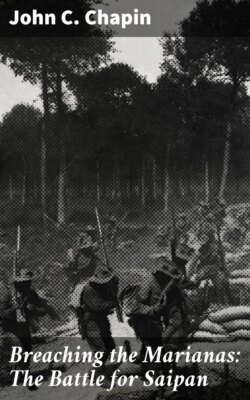Читать книгу Breaching the Marianas: The Battle for Saipan - John C. Chapin - Страница 7
На сайте Литреса книга снята с продажи.
Оглавление[Sidebar (page 6):]
The 4th Marine Division
Table of Contents
This division had its roots in the shifting and redesignation of several other units. The 23d Marines began as infantry detached from the 3d Division in February 1943, the same month that an artillery battalion became the genesis of the 14th Marines and engineer elements of the 19th Marines formed the start of the 20th Marines. In March the 24th Marines was organized, and then in May it was split in two to supply the men for the 25th Marines.
Department of Defense Photo (USMC)
This war-time shuffling provided the major building blocks for a new division. The units were originally separated, however, with the 24th Marines and a variety of reinforcing units (engineer, artillery, medical, motor transport, special weapons, tanks, etc.) at Camp Pendleton in California. The rest of the units were at Camp Lejeune, North Carolina. This East Coast echelon moved to Pendleton by train and also by ship through the Panama Canal in July and August 1943. All the units were now finally together, and thus the 4th Marine Division was formally activated on 14 August 1943.
After intensive training, it shipped out on 13 January 1944, and in 13 short months made four major assault landings: Roi-Namur, Saipan, Tinian, and Iwo Jima, suffering over 17,000 casualties. It was awarded two Presidential Unit Citations and a Navy Unit Commendation, and then deactivated 28 November 1945. In February 1966, however, it was reactivated as the lead division in the Marine Corps Reserve, and it furnished essential units to Desert Storm in the liberation of Kuwait.
The 4th Marine Division Patch
Worn on Saipan, it had a gold “4” on a scarlet background, the official colors of the U.S. Marine Corps. This emblem was designed by SSgt John Fabion, a member of the division’s public affairs office before the Marshalls campaign. His commanding officer was astonished to find that, when the division attacked Roi islet in Kwajalein Atoll in the Marshall Islands (January 1944), the layout of the runways on the Japanese airstrip there were “an exact replica.”
